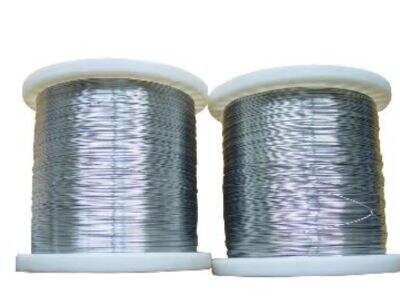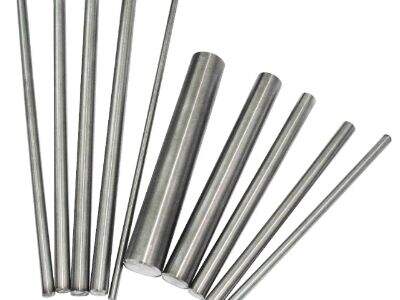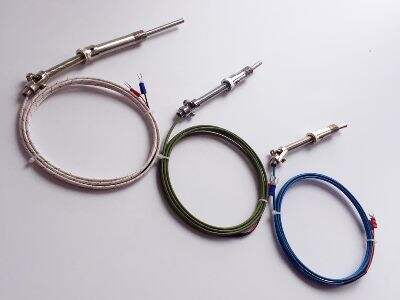For industrial applications, temperature can be measured with thermocouples. Various thermocouple materials provide different temperature ranges enabling the selection of the most appropriate material for an application. Here at Kuaike Precision Alloy, we realize the importance of choosing the ideal thermocouple material for your requirements, and so, in this article, we will look at temperature ranges for various thermocouple materials and where you can source the broadest temperature ranges for thermocouples
Temperature ranges of different thermocouple materials
There are several different metal combinations which can be used to produce a thermocouple, each with its own temperature range. For instance, Type K thermocouples, composed of Chromel and Alumel, have a broad temperature range from -200 to 1,371 °C. As such, they can be used in many applications under low to high temperature. A Type J thermocouple, for example, consisting of iron and constantan, has a range from -210 degrees to 1,200 C. Type T thermocouples copper and constantan, despite their smaller range of -200 to 400 degrees Celsius, in contrast provide a high level of precision for low-temperature measurements. Knowing the temperature limits of various thermocouple materials is important when choosing a sensor to meet your specific application requirements

Where to Get the Highest Temperature Ranges for Thermocouples
When it comes to thermocouples offering the most temperature ranges, there are a few materials that are superior. For instance, the refractory metals such as tungsten and molybdenum have good high-temperature properties suitable for harsh environments. These TCs are rated for -200-2300 °C and can be used in applications including aerospace/automotive industry as well as in the semi-conductor industry. Also, exotic metal combinations such as platinum-rhodium alloys offer good accuracy and stability to 1,800 C. In reviewing the various thermocouple materials, there are some that have greater temperature ranges available for use in your industrial temperature applications
Selecting the Ideal Thermocouple Material for Use in High Temperature Applications
The choice of thermocouple material is important when it comes to temperature measurement in high temperature applications. Various thermocouple materials have different temperature ranges and attributes. At Kuaike Heat Resistant Alloys, we have the thermocouple materials you need in stock to facilitate your wholesale purchase
One sensitive factor when selecting a thermocouple material for high temperature monitoring is the temperature limit of the body and ability to be used in other parts. For instance, K type thermocouples are made from Chromel and Alumel and are used for temperature measurements of 1,100°C or less while R/S type thermocouples can be used at a higher temperature of 1,600°C
Aside from temperature range, the stability and accuracy of the thermocouple material should be taken into account as well. In some cases, certain materials are more susceptible to shifting or decomposition with time that can lead the displacement and incorrect measurement of temperature. Type R and Type S thermocouples made of platinum are chosen for their robust construction and stability, which make them perfect for high temperature applications where accuracy is crucial
The Advantages of Different Thermocouples for Mass Buyers
We provide thermocouple materials with several type as required by wholesale buyers at Kuaike Precision Alloy. Each material has its own advantages and processes it is best suited for; therefore, selecting the perfect material for a given temperature range and environment is essential
For example, Type J (iron-constantan) thermocouples have a wide temperature range capability from −210°C to 1,200°C and are relatively low cost when compared to other materials. Type T thermocouples consist of copper versus constantan and are suitable for low temperature measurements (from -200 to 350 °C) as they have a relative high sensitivity and a very good accuracy
We also cater to wholesale buyers of lesser known thermocouple materials such as Type B Platinum-Rhodium thermocouples. These thermocouples have a very high temperature range (0°C to 1,800°C) and are designed for use in high temperature applications like aerospace and metal working

What Is the Range of Temperature for the Maximum and Minimum Thermocouple Material
When it comes to selecting a material with the broadest temperature range, Type B is the way to go. Type B thermocouples are constructed with a platinum-rhodium 30platinum (6%) wire and a platinum - rhodium 6% wire, they possess the second highest temperature range of all standardized thermocouples
We supply Type B thermocouples to bulk purchasers seeking high quality temperature measuring appliances for use in challenging conditions at Kuaike Precision Alloy. Small, they are renowned for their accuracy and stability, ensuring they are a favorite in industries needing accurate temperatures
They also exhibit good high temperature stability and resistance to oxidation, so are very reliable in use at high temperatures. Regardless of whether you are testing in a lab or working in an industrial plant, B Type thermocouples from Kuaike Precision Alloy are the ideal selection for precise temperature readings across high/low and ambivalent temperatures
Table of Contents
- Temperature ranges of different thermocouple materials
- Where to Get the Highest Temperature Ranges for Thermocouples
- Selecting the Ideal Thermocouple Material for Use in High Temperature Applications
- The Advantages of Different Thermocouples for Mass Buyers
- What Is the Range of Temperature for the Maximum and Minimum Thermocouple Material
 EN
EN
 AR
AR
 DA
DA
 NL
NL
 FI
FI
 FR
FR
 DE
DE
 EL
EL
 HI
HI
 IT
IT
 JA
JA
 KO
KO
 NO
NO
 PL
PL
 PT
PT
 RO
RO
 RU
RU
 ES
ES
 SV
SV
 TL
TL
 IW
IW
 ID
ID
 SR
SR
 SL
SL
 UK
UK
 VI
VI
 HU
HU
 MT
MT
 TH
TH
 TR
TR
 AF
AF
 MS
MS
 GA
GA
 AZ
AZ
 MN
MN
 MY
MY
 KK
KK
 UZ
UZ
 KY
KY
 BN
BN

